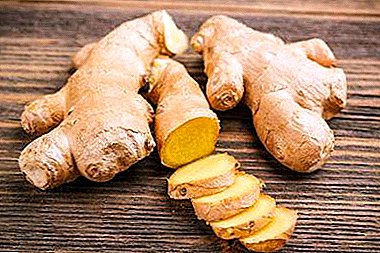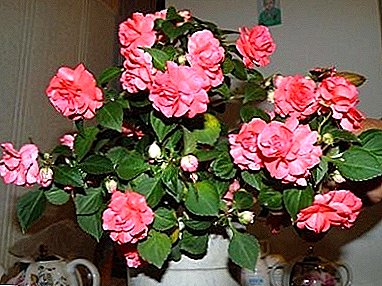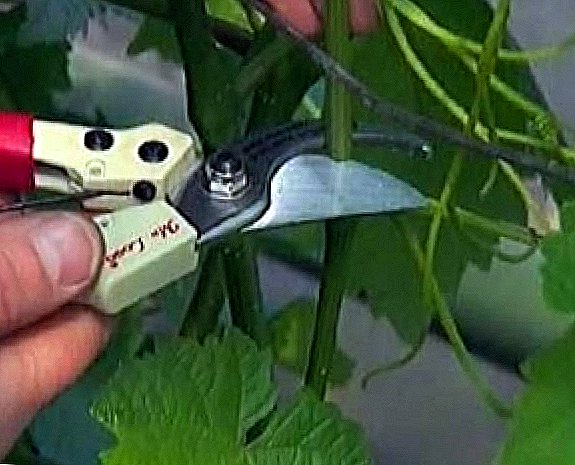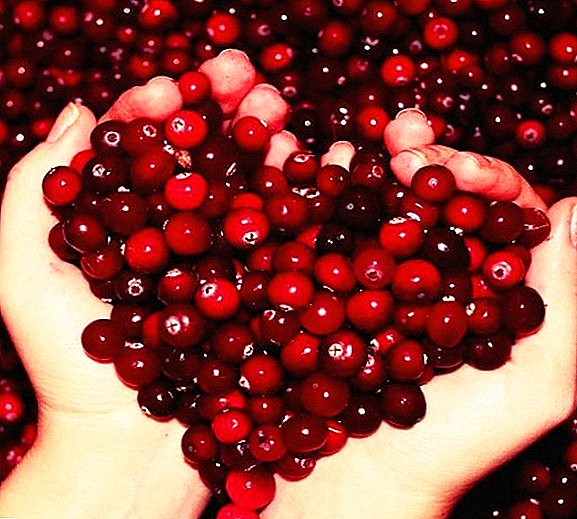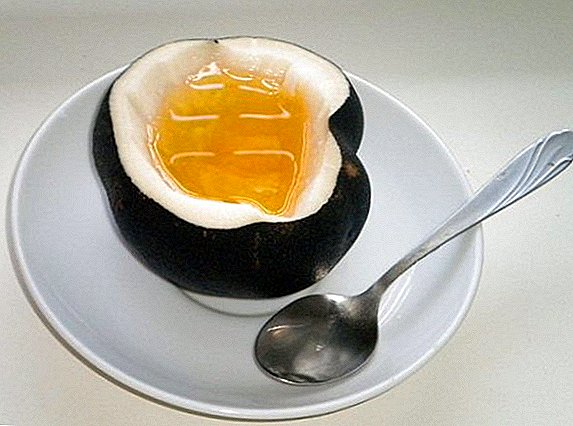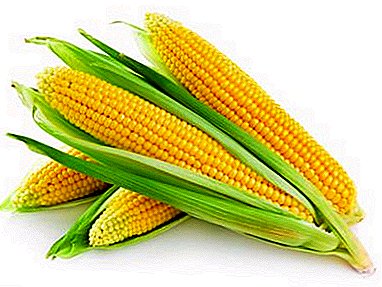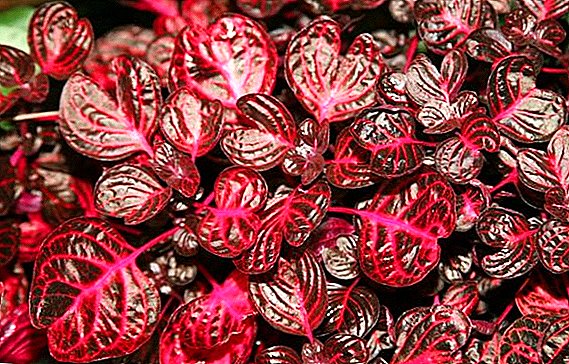 A plant with character, whimsical and capricious, as well as unpredictable - so growers characterize an unusual plant called irezine. Beginners can hardly find an approach to a wayward tenant, but experienced flower growers with patience and perseverance can create the necessary conditions for the flower and get a lush, majestic shrub. If you decide to bring this colorful subtropical resident to the house, it is important to know about the nuances of curiosity care.
A plant with character, whimsical and capricious, as well as unpredictable - so growers characterize an unusual plant called irezine. Beginners can hardly find an approach to a wayward tenant, but experienced flower growers with patience and perseverance can create the necessary conditions for the flower and get a lush, majestic shrub. If you decide to bring this colorful subtropical resident to the house, it is important to know about the nuances of curiosity care.
Description
Irezine (other names - Irezina, Iresina) is a member of the amaranth family, it may be a herbaceous perennial plant, shrub or shrub, and even a tree. Grows in Australia, South and Central America.  Domestic ornamental species reach 40-60 cm in height, have rounded and oblong, pointed leaves up to 6 cm in length, saturated red, brown and purple shades with dark veins.
Domestic ornamental species reach 40-60 cm in height, have rounded and oblong, pointed leaves up to 6 cm in length, saturated red, brown and purple shades with dark veins.
Thanks to such an unusual color, irezine has gained popularity.
Did you know? Today, there are about 450 species of carnivorous plants on the planet, which, in addition to the ability to photosynthesis, can eat protein food. They do not disdain insects, snails, frogs, and even small lizards and rodents.
At home, it blooms extremely rarely, but even if it does, miniature bright flowers have no decorative value. Irezine is used to create landscape compositions, and also as a houseplant in pots or ampelous designs.
Herbaceous perennial plants include stars such as lanceolate starfish, lithnis, acanthus, canuper grass, ornamental bow, yaskolka, tiarell, gelenium, and crested.
Kinds
In total, there are about 80 species in the plant genus, but only two of them have become common as ornamental plants:
- Iresine Linden (Iresine lindenii). Herbaceous perennial originally from Ecuador. Reaches 50 cm, painted in a rich blood-scarlet color with scarlet streaks. The leaves are oval, pointed at the ends, from 2 to 6 cm in length. The plant is mainly planted outside. The advantage of this species is its rapid growth, beautiful and spectacular tillering - at a height of 10-12 cm from the ground and Linden's rubber forms beautiful side shoots, which in a short time create a crimson carpet from leaves and make a bright accent in landscape composition.

- Irezine Herbst (Iresine herbstii). In the wild, grows in Brazil. Differs in smaller growth - only 20-40 cm in height, the leaves are round, wide, bifid at the tips. The shade of the leaves is dark maroon with lighter bright red streaks. There are also subspecies with a green shade of leaves, on which burgundy and yellow-green veins are located. There may be plants with an unusual color - a metallic sheen on the crimson leaves. Irezine Herbst often used as a potted pot plant.

Plant Care
Competent care for a tropical resident will ensure its rapid growth, beauty and health. Care of the bush involves the selection of the desired lighting and temperature, moisture regime, as well as regular feeding and trimming.
Lighting
Irezine needs a lot of light, so for growing in a house it is worth choosing the most lighted place in the southern, southwestern or southeastern part.
If this is not possible, you can use the east or west side of the room. In no case do not put the pot with irezine near the northern part of the house.
In the hot spring and summer months, irezine should be lightly shaved to avoid burns if it is exposed to direct sunlight. The plant must be gradually and smoothly adapted to the direct rays of the sun.  The length of daylight hours should be at least 14 hours, preferably 16 hours. To fill the lack of light, you can use special lamps.
The length of daylight hours should be at least 14 hours, preferably 16 hours. To fill the lack of light, you can use special lamps.
Important! With a lack of lighting, the leaves lose their bright crimson hue, the stems are drawn out, the bush loses its attractiveness.
Temperature
Irezine differs unpretentiousness regarding temperature. Year-round, you can keep the temperature within + 16 ... +25 ° C.
Any temperature outside the specified range affects the state of irezine negatively: if it is too low (from +12 ° C and below), the plant may rot, lose leaves, and if it is too high, the leaves will wither. 
The soil
For growing irezine, it is necessary to purchase a special soil with a neutral or slightly acidic pH (6-7). Shrub necessarily need to provide high-quality drainage.
Learn about the importance of soil acidity, how to determine acidity, how and how to deoxidize the soil.The substrate can be prepared from the following components:
- sod land (4 parts);
- leafy ground (4 parts);
- humus (2 parts);
- sand (1 part);
- peat (1 part).
The same mixture is prepared when transplanting irezine. It is necessary to replant as the root system grows, on average, once in 2-3 years in warm time. 
Watering and moisture
For irrigation, you can use soft (rain or thawed), filtered or settled during the day water with a temperature of 20 ... 25 ° C. The main rule for watering is moderation, since both the deficit and the excess of moisture are dangerous for irezine.
In the spring and summer, requires abundant watering. Determine the need for moisture by drying the topsoil.
In winter, watering is reduced to 1 time per week, especially if you keep the plant at sufficiently low temperatures (+ 14 ... +16 ° C). But even in the cold season it is impossible to allow complete drying of the earthy coma.
There is no particular requirement for air humidity, and the rubber is resistant even to dry air in the room. However, during the hot summer months, as well as in winter, during the period of operation of heating devices, it is necessary to moisten the aboveground part of the plant from the sprayer several times a week. 
Top dressing
The plant needs year-round feeding, but the frequency of fertilization depends on the season. In spring and summer, when there is a period of intensive growth, fertilizer should be applied weekly.
You can use both organic and mineral fertilizers, according to the instructions on the package. During the period of slow growth (autumn and winter), the frequency of fertilizing is reduced to 1 time per month.
As an organic fertilizer used bone meal, fish meal, milk whey, egg shells, banana skins, onion peel, nettle.In this case, it is necessary to halve the amount of nutrients from the specified dose. However, some irezine owners claim that a room pet tolerates the winter months well, even without supplements.

Pruning
In order to form a bush of a beautiful shape, to rejuvenate and rehabilitate irezine, it is necessary to conduct regular pruning, or more precisely, pinching. You need to remove the elongated upper and some side shoots.
In their place, the plant after a short time will let a lot of young shoots begin to bush, which will give it more pomp. In early spring, you can spend a more thorough pruning, which will be a stimulus for enhanced growth of an exotic pet.
Did you know? When the word "flower" in most arises association with a beautiful, sophisticated, fragrant inflorescence. However, not all flowers have such characteristics. For example, the inflorescences of lion's pharynx after flowering resemble real skulls and have a rather awesome appearance.

Reproduction by cuttings
Propagation of irezine occurs by seed and grafting, the latter method being used in the overwhelming majority of cases because of the simplicity and quick result. The procedure should be carried out in early spring.
Stages of the procedure:
- Cut off cuttings about 7-8 cm long.
- Deepen them in a tank with sand (you can prepare a mixture of sand and peat in a 1: 1 ratio).
- Moisten and maintain temperature up to +20 ° C.
- Cuttings need to cover the film to create a "greenhouse".
- Prepare permanent pots for plants up to 10 cm in depth, prepare the same soil as for transplanting adult bushes.
- Approximately 7-10 days rooting of cuttings will occur, and, therefore, they can be planted for permanent growth.
 Caring for young plants is no different from caring for adult specimens.
Caring for young plants is no different from caring for adult specimens.Possible difficulties
When growing this representative of the subtropics, you may encounter such problems:
- The fall of the leaves of the bottom. In young plants occurs due to lack of light or due to tightening with pruning. For adult specimens, the fall of the lower leaves is a normal process.
- Leaf fall all over the plant. The reason may be excessive or insufficient watering.
- Pulling the stems. Occurs when there is insufficient lighting.
Pests
The plant is very rarely affected by fungal or bacterial diseases, but the attack of harmful insects and ticks often happens because of a violation of the rules of care. It is important to regularly inspect irezine leaves from the outside and inside of the sinus and the stems in order to notice the “attack” of uninvited guests in time.
Find out what methods are used to fight aphids, whitefly, spider mites, red bites, thrips.Most often irezine is affected by such malicious insects:
Important! If you find that the bush is affected by pests, you need to quickly examine the remaining plants in the room and isolate the damaged ones in a separate room.
- Aphid. It is possible to detect the pest by external signs: the leaves curl, become covered with sticky secretions, on which the black fungus spreads. Green aphid affects the bush due to excessive feeding or with its complete absence (when the bush weakens), as well as due to stale air, lack of ventilation, insufficient lighting or watering. You can fight with chemicals ("Aktellik", "Akarin", "Fufanon") in accordance with the instructions.

- Whitefly. This pest is quite difficult to remove, because you need to take all preventive measures. The main reason for the appearance of the whitefly is stale, humid air and high temperature. With a dense arrangement of greenery, the chances for the appearance of a pest increase. The infected plant should be washed, if possible, manually remove the insect, replace the soil. Then you need to carry out treatment with the preparations "Confidor" or "Aktellik". You can also prepare a home remedy: mix 1 part of minced garlic with 5 parts of water, leave for a week and spray the plant.

- Spider mite If a pest is affected, the underside of the leaves is covered with a multitude of white dots, it is wrapped in cobwebs. Abundant reproduction of the pest leads to infections. The cause of the occurrence is dry air and soil. To eliminate pests, plants, pots and window sills should be wiped with soapy water, then treated with insecticides several times: Apollo, Akarin, Omite.

- The scarlet. The affected leaves are covered with a light patina, similar to wax, and sticky secretions. Scarlet occurs when excessive dryness of the soil and air, in the presence of many dry leaves. To prevent damage by a pest, irezine should be watered regularly, sprayed, cleaned, and cleaned. To eliminate the use of drugs: "Fitoverm", "Calypso", "Aktara".

- Thrips. When a nimble insect appears on one room pet, it is capable of quickly hitting the next greenery, therefore it is extremely important to isolate the diseased bush. For the prevention of occurrence, it is necessary to avoid dryness of the soil, regularly water and wash the leaves. The top layer of soil needs to be replaced, the leaves should be washed and treated to iresine with such means: "Inta-Vir", "Fitoverm", "Karbofos", "Aktellik".

Among all houseplants, irezine is distinguished by an unusual color range of foliage. It will certainly be the main focus on the background of pot greens. Having learned about all the nuances and rules of care for a tropical inhabitant, you can easily grow an exotic, perennial, unusual plant.


